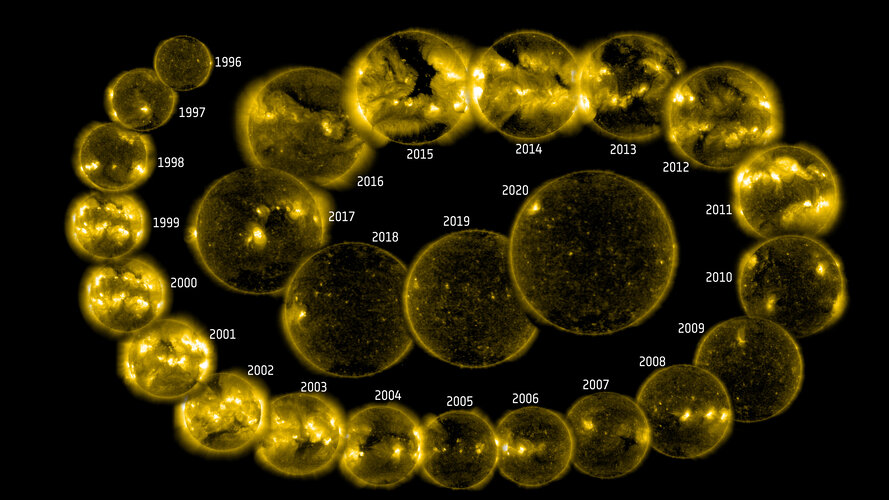NASA evaluating “next steps” for VIPER lunar rover mission
Tuesday, 05 November 2024 01:24

EOI Space Achieves Milestone with Successful Testing of Flight Propulsion System
Monday, 04 November 2024 20:21

Apophis: A new European space mission could get up close with a large asteroid that's set to brush by Earth
Monday, 04 November 2024 16:40This request seems a bit unusual, so we need to confirm that you're human. Please press and hold the button until it turns completely green. Thank you for your cooperation!
Press and hold the button
If you believe this is an error, please contact our support team.
185.132.36.159 : f4555b4b-b85b-4f4f-8d8c-ffc5618c
Communications user terminal prepares for historic moon flyby
Monday, 04 November 2024 14:41This request seems a bit unusual, so we need to confirm that you're human. Please press and hold the button until it turns completely green. Thank you for your cooperation!
Press and hold the button
If you believe this is an error, please contact our support team.
185.132.36.159 : 61523cd3-a570-4b12-94e4-a589df73
Rocket Lab confirms plan to bid for Pentagon launch contracts with new medium rocket
Monday, 04 November 2024 14:37

Australia axes $7bn military satellite project
Monday, 04 November 2024 14:04 In a significant blow to Australia's defence capabilities, the federal government is cancelling what would have been the nation's largest-ever space project: a A$7 billion military satellite communications system.
The decision was confirmed in a press statement today. It comes just 18 months after the Albanese government gave the green light to the ambitious program.
Defence industry
In a significant blow to Australia's defence capabilities, the federal government is cancelling what would have been the nation's largest-ever space project: a A$7 billion military satellite communications system.
The decision was confirmed in a press statement today. It comes just 18 months after the Albanese government gave the green light to the ambitious program.
Defence industry Antaris™ and SEAKR Engineering LLC Collaborate to Drive Speed and Efficiency in Satellite Development
Monday, 04 November 2024 14:00
Australia abandons $5 billion geostationary satellite program to explore ‘multi-orbit’ options
Monday, 04 November 2024 13:08

The solar cycle, a heartbeat of stellar energy
Monday, 04 November 2024 12:06
The Sun follows a roughly 11-year rhythm of waking up and becoming very active before calming down again, a stellar beat known as the solar cycle. This affects Earth because it shapes space weather, determining how much radiation, magnetic field and particles the Sun flings out into space and towards our planet.
NASA seeks continuity in human spaceflight programs in next administration
Monday, 04 November 2024 11:33

Japan launches a defense satellite carried by a new flagship H3 rocket
Monday, 04 November 2024 08:23This request seems a bit unusual, so we need to confirm that you're human. Please press and hold the button until it turns completely green. Thank you for your cooperation!
Press and hold the button
If you believe this is an error, please contact our support team.
185.132.36.159 : 696125d9-d470-4f3c-8591-214d169d
Japan successfully launches a defense satellite carried by a new flagship H3 rocket
Monday, 04 November 2024 08:23This request seems a bit unusual, so we need to confirm that you're human. Please press and hold the button until it turns completely green. Thank you for your cooperation!
Press and hold the button
If you believe this is an error, please contact our support team.
185.132.36.159 : a37b1fce-3687-4aeb-817e-7d9f74bf
Japan launches Kirameki 3 military communications satellite with H3 rocket
Monday, 04 November 2024 07:35

Shenzhou 18 crew back in China after 6-month mission to Tiangong station
Monday, 04 November 2024 03:30 The Shenzhou 18 mission crew safely returned to Earth early Monday, completing a six-month mission aboard the Tiangong space station. The three-member crew, led by mission commander Senior Colonel Ye Guangfu, along with Lieutenant Colonels Li Cong and Li Guangsu, touched down at 1:24 am local time at the Dongfeng Landing Site, situated in the Gobi Desert within Inner Mongolia. Their return journ
The Shenzhou 18 mission crew safely returned to Earth early Monday, completing a six-month mission aboard the Tiangong space station. The three-member crew, led by mission commander Senior Colonel Ye Guangfu, along with Lieutenant Colonels Li Cong and Li Guangsu, touched down at 1:24 am local time at the Dongfeng Landing Site, situated in the Gobi Desert within Inner Mongolia. Their return journ 

